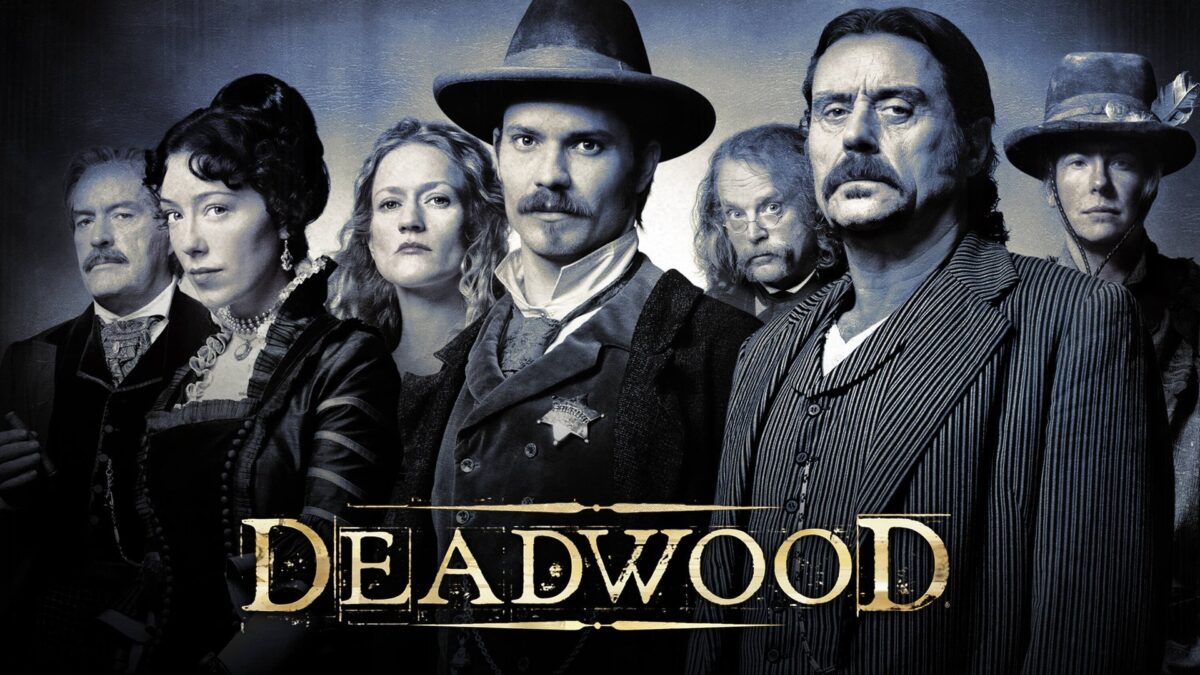I’ve been circling HBO’s cult favorite Western Deadwood for a while. High recommendations from friends and my love for AMC’s Hell on Wheels (reviewed here, here, and here on Concerning History) inclined me towards giving it a try, but my curious lack of interest in other Westerns has given me pause. I finally pulled the trigger, so to speak, in June of 2022, and while I thoroughly enjoyed Deadwood as a series in its own right, as a period piece my feelings towards it were decidedly mixed.
Deadwood is paradoxically both more and less historical than my beloved Hell on Wheels. It tells the story of its eponymous settlement as it transitions from a lawless gold rush camp to an up-and-coming regional power in the Black Hills of Dakota through the personal narratives of some of the town’s most famous historical inhabitants: its crime boss and saloon owner Al Swearengen; its first sheriff, Seth Bullock; Wild West luminaries Wild Bill Hickock and Calamity Jane; and mineral magnate and proto-robber baron George Hearst. While the details of many of these characters’ stories are not quite in keeping with their historical counterparts, their inclusion against the equally historical backdrop of the Dakota gold rush and transition from Native American treaty land to United States Territory to, eventually, states in the Union lends an accurate air to its proceedings that other Westerns many times lack. Indeed, the choice of Hearst as villain for the final two seasons is a great way of demonstrating that the late 19th century’s titans of industry built their fortunes on unscrupulous exploitation of the country’s post-Civil War westward expansion.
And yet, it is this very decision to set the show in one of the most famous small towns of the American West that deprived it of much needed veritas for me. In some ways, Deadwood felt very much like an historical theme park, complete with stereotypical saloons, brothels, panning for gold, and cameos from famous figureheads. It’s decision to whitewash its cast also doesn’t help; a grand total of four black characters are introduced across three seasons, all of whom are minor and two of whom die, while only two unnamed Native Americans are included, only one of whom even appears alive on screen. Furthermore, the historical threads of Deadwood’s setting always seem like window-dressing for its character-driven plot (as opposed to Hell on Wheels, where the fictional characters’ development always felt driven by the all-encompassing need to keep laying track through inhospitable terrain–both geographic and human). All this might have left a better impression on me if much of its story had not resolved anticlimactically; Deadwood’s choice to have none of its conflicts ultimately resolved through shoot-out might in fact be more historical than other Westerns, but left me feeling distinctly robbed of the cathartic release much of its build up had demanded.
This is not to say I did not enjoy my time in the Black Hills; character-driven story only works if your characters are engaging, and it is hard to find more engaging actors for me than Timothy Olyphant and Ian McShane. For those who enjoy watching American history on screen, I cannot call Deadwood a must-watch, and not just for its infamously foul-mouthed dialogue, but if you’re looking for something fun to put on in the background while doing something else, you can certainly do far worse.
